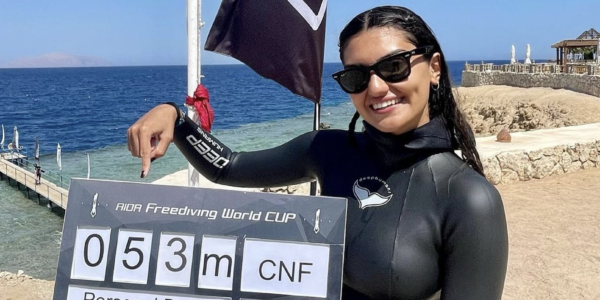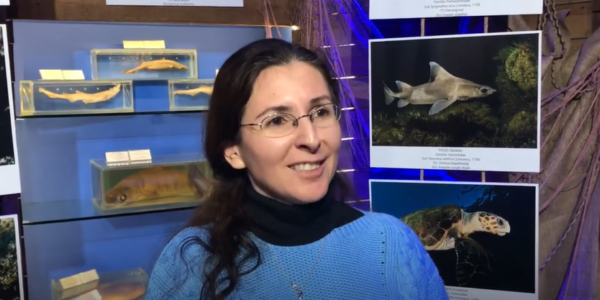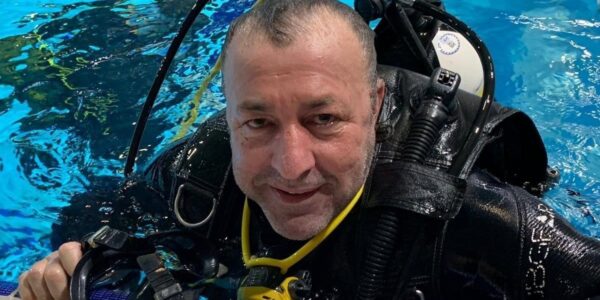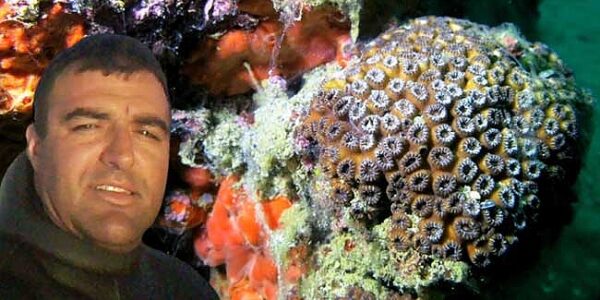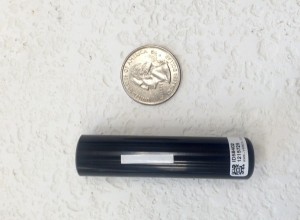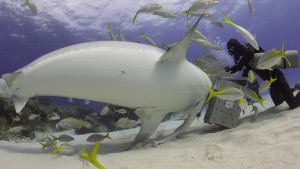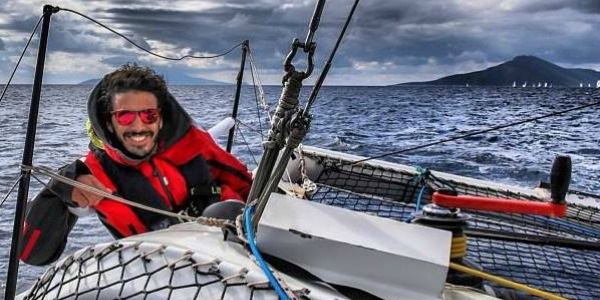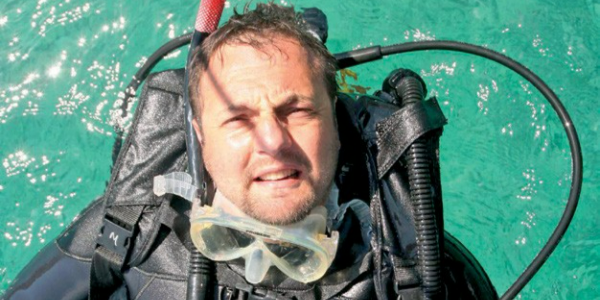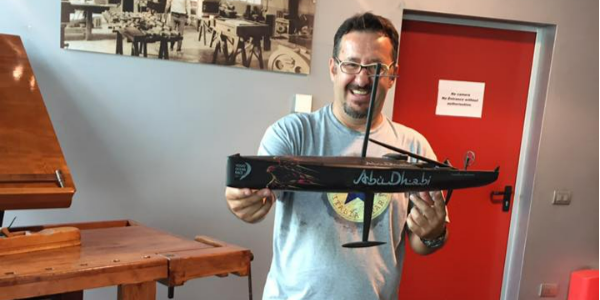What’s happening in this video?
In this video, a tiger shark investigates and eventually bites an underwater hydrophone that our team set up in the Bahamas to study tiger shark movements. This is part of a larger collaborative research project underway on the behavior and ecology of tiger sharks in the subtropical Atlantic Ocean.
How it works?
These hydrophones, termed “acoustic receivers”, are essentially underwater devices that “listen” for and record acoustic signals emitted from transmitters that are attached to the study animals.
When the animal swims within several hundred meters of the receiver, the device records the presence of the transmitter tag (i.e. the animal) and the time of the detection. To be effective, scientists usually place a series of these receivers, called an array, in strategic locations to detect their study species. Thus, these acoustic tracking tools can provide detailed information on animal movement patterns.
To retrieve the data recorded by the receivers, scientists then have to usually recover and download the data, although new tools allow this to be done wireless and by other means. This differs from satellite tracking, where transmitters send recorded data from tagged animals to orbiting satellites. You can learn about satellite tracking here.
In our tiger shark study, the transmitters we use are very small (only 16 mm, image 1 below), especially when compared to the size of the huge tiger sharks (up to 4 m+). We carefully implant the transmitters inside the shark’s abdomen. To do this, we make a small incision with a scalpel through the shark’s abdominal wall, insert the tag and quickly stitch it back up (Image 2 below). The shark is released and the incision fully heals within days. The transmitters we use have enough battery to transmit for nearly 5 years.
The great thing about this type of animal tracking technology is that the receivers can detect and record any animal carrying a transmitter, even if from another study and species. For example, our tiger sharks have been detected by receivers in the Bahamas set up to study Bonefish as well as receivers in Florida set up to study lionfish. Likewise, our Tiger Beach array has recorded lemon sharks from Florida and Great Hammerheads from Bimini, Bahamas. This provides a unique opportunity to collaborate, share and obtain data that otherwise could not be available in a single study.
Electronic tagging and tracking of marine animals described above provides invaluable data that can support the conservation of marine species. The Ocean Tracking Network (OTN) is a global partnership that helps support the implantation of acoustic tracking projects around the globe. This includes providing acoustic receivers, expertise as well as a platform for data sharing and collaboration. The mission of OTN is to support sustainable management of valued aquatic species through these efforts.
So why did the tiger shark inspect and bite the hydrophone?
The area in which this receiver was placed is in the middle of a popular dive tourism site where tiger sharks are attracted to the area for diver viewing using minced fish (or chum). This likely brought the shark near the hydrophone in the first place. However, as an electronic device, the receiver emits a weak electric field which the shark may have been able to detect using their unique electromagnetic sense, perhaps sparking their interest. Furthermore, tiger sharks are curious creatures and will often investigate novel objects in their environment. Given that their teeth and jaws are sensory structures, without hands, the tiger may have simply been examining the hydrophone (with its mouth). Since tiger sharks have the power and capability to bite through turtle shells, we are lucky that it was only an exploratory bite! The receiver is fine and continues to collect data on sharks that swim by.
Keywords
national geographic




